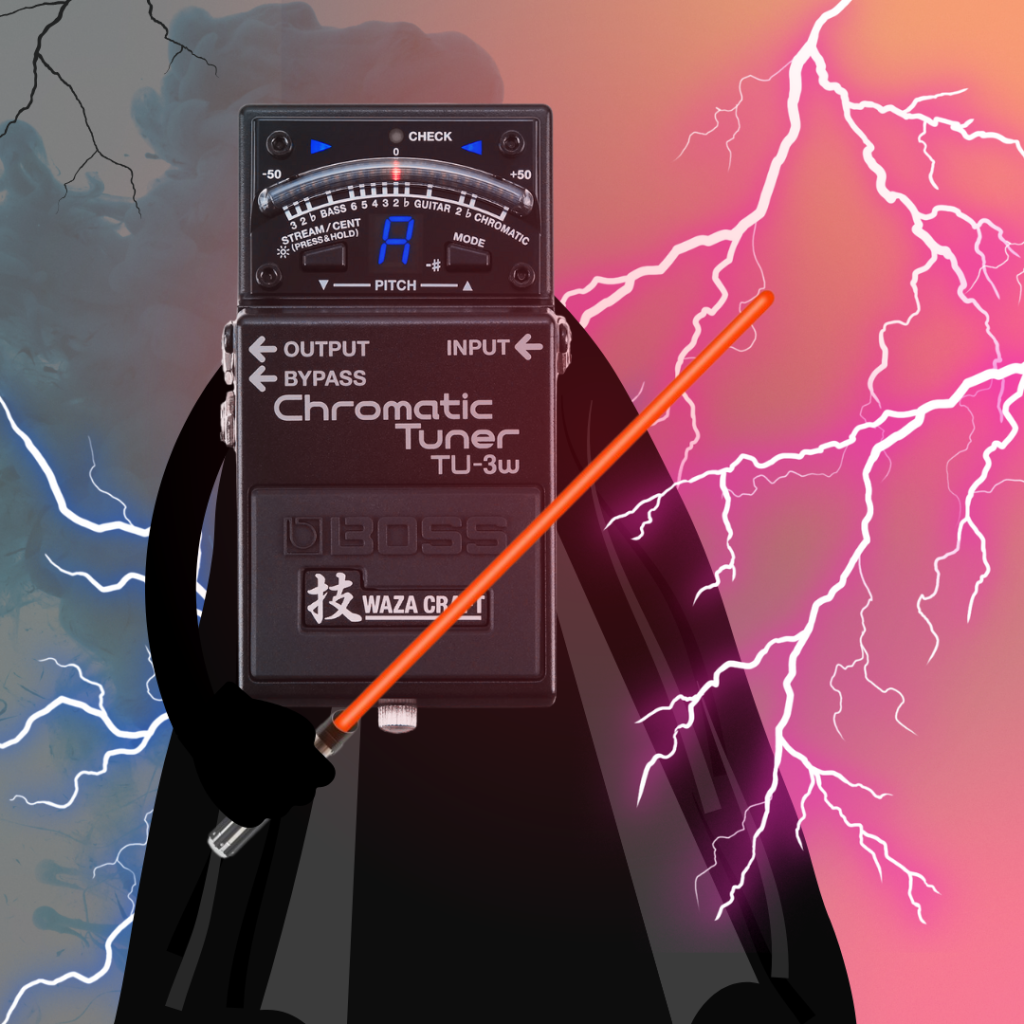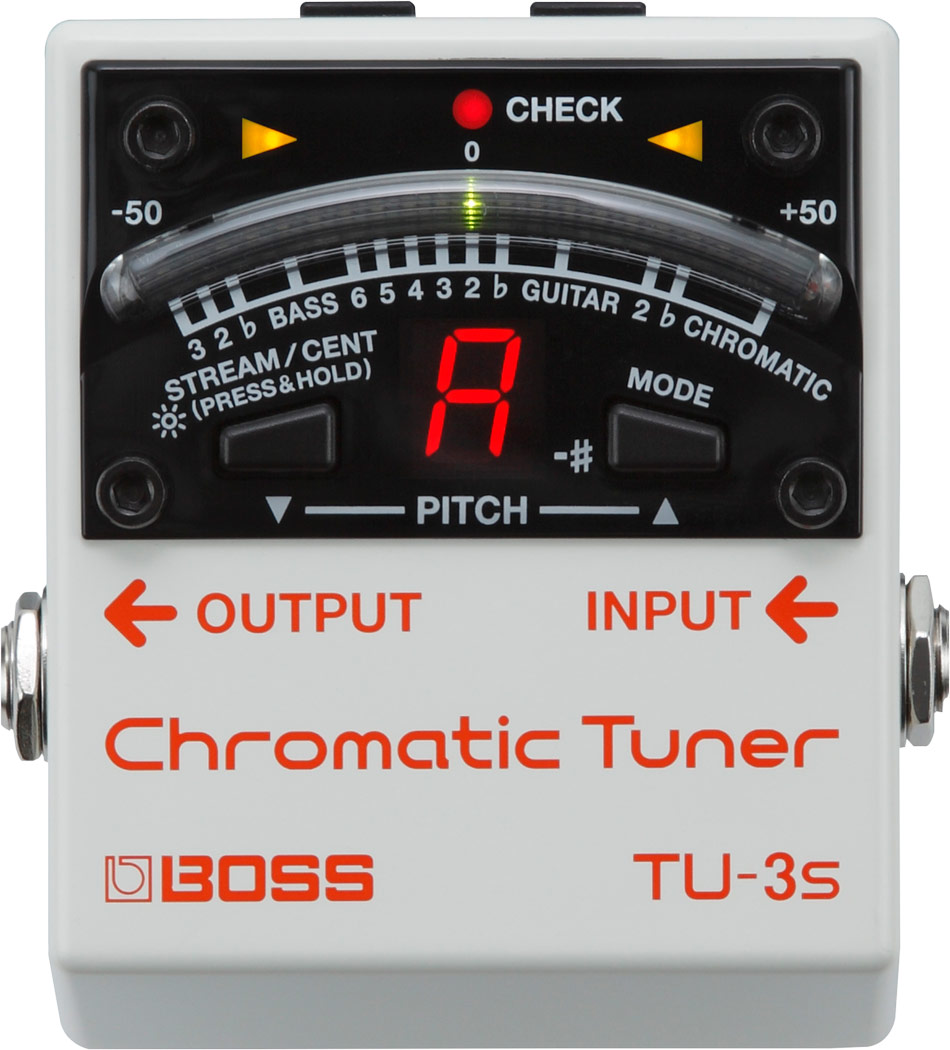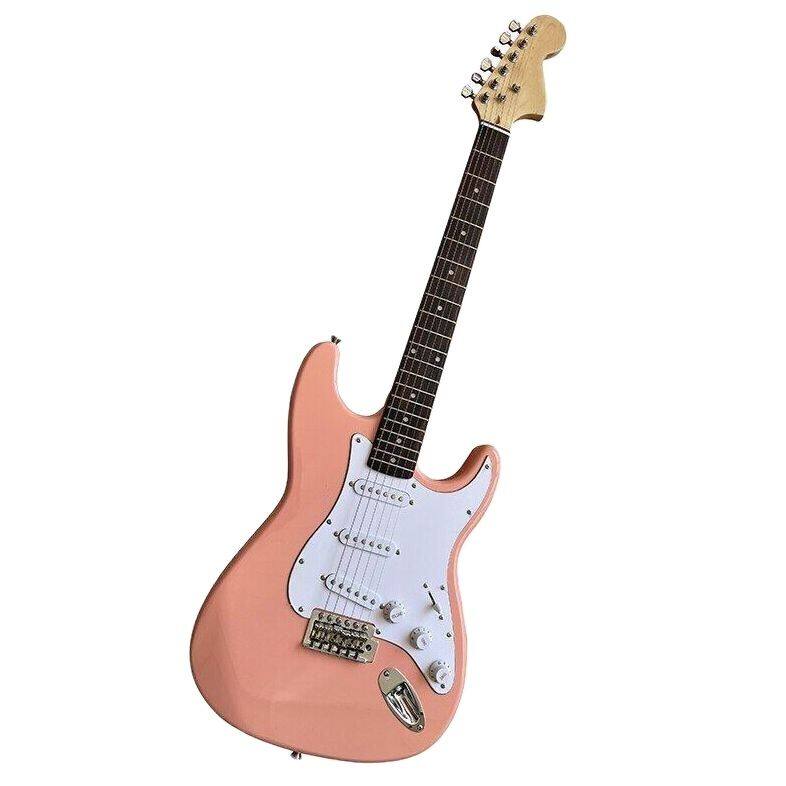May the 4th Be With TU-3W
As an Amazon Associate, I earn from qualifying purchases. That means I earn commissions from my sponsored links or I make money when readers (you) purchase items through my links. Your purchase allows me to continue working as a stay-at-home dad who moonlights as a farmer and a musician. Needless to say, this post contains affiliate links.
A few years ago, I had the opportunity to buy the Boss Tera Echo TE-2 at Yamaha Perfect Pitch.
I tried it out.
Was impressed by it.
But, I ended up buying the Boss Waza Craft Chromatic Tuner TU-3W instead.
Here’s how that happened.
So, I pointed out to the guy that I wanted to test the TE-2. I then proceeded to pick a good enough guitar. I think it was a Contemporary Squier Strat and plugged into an amp that he recommended.
He then told me that for some strange reason, that Strat wouldn’t stay in tune and that I should pick a different one. I said why not tune it?
That’s when he brought out the TU-3W.
So, we hooked it up, turned it on and tuned the guitar. I then stepped on it again to turn it off and proceeded to experiment with the Tera Echo. It was fun. Everything I’d hope to experience in that pedal.
I tried it out with an SD-1 and a DS-1 and the sounds you could get were amazing.
Amazing as long as the guitar stayed in tune.
I had to stop and tune the guitar several times because it would slip out of tune every so often.
I somehow just got sick of stepping on the tuner every time and just left it on while I noodled away.
And that’s when I noticed a change in the tonal dynamics of the sound coming from the amp.
I turned off all the other pedals and just played with the tuner on. Somehow my sound felt more alive.
Like I had a boost pedal that only, so slightly, colored the sound enough to make it interesting.
So I went to the cashier, paid for the pedal and walked out with the TU-3W.
A Tuner Like No Other
I have a lot of tuners.
A lot.
Enough to make me think that I may have a disease.
But after getting the TU-3W, all those other tuners are now officially retired.
At its core, the TU-3W helps you do one thing perfectly: tune your guitar or bass quickly and accurately. But there’s more to it than that:
- High-Brightness 21-Segment LED Meter – Whether you’re under an unusually bright spotlight or the sun’s high up during an outdoor gig, the display is always readable. There’s no more excuse to “ear” it.
- Accu-Pitch Sign Function – This lets you hear and see exactly when your string is in tune. It blinks to confirm. And that’s what’s important to me. I don’t really want to know how many cycles per hum or other technical stuff related to tuning. I just want to know that I’m in tune and keep playing.
- Mute While Tuning – Silently tune between songs. No one hears you struggling to tune your open G.
- Selectable True Bypass or Buffered Bypass – it’s a good thing they included this feature because I know a lot of guitarists who’d turn their noses up if a pedal didn’t have true bypass. For me, I prefer the buffered bypass feature of this pedal. It just seems to enhance the signal integrity and make my sound pop. I guess that’s the best way to display Waza Craft circuitry for zero tone loss.
- Durable Boss Tank Build – Boss built it. ’nuff said.
- Chromatic + Guitar/Bass Modes – Standard tuning? Drop tunings? Seven-string? TU-3W doesn’t break a sweat. This, I actually considered to be a bonus. I’m sick and tired of having to change tuners just to tune a guitar or a bass. They’re practically the same instrument, right? The only difference is the build and register that they’re in. so, in theory, a single tuner should be able to tune them perfectly. Seems like no one got that memo except for Boss. Maybe that’s why they’re the Boss!
Why It Deserves a Spot on Your Pedalboard
1. You’re Only as Good as Your Tuning
No matter how epic your pedalboard build is, or how many boutique pedals you have, or how creamy your overdrive, if you’re not in tune, you might as well just chuck those gadgets out.
The TU-3W is the first pedal you turn on, and sometimes the only one the audience will notice if it’s not there.
2. Buffer vs True Bypass = Freedom to Choose
If your pedalboard has long cables or lots of effects, signal degradation becomes a real problem. The TU-3W gives you buffered bypass to preserve your tone. Or if you’re a purist, flip the switch to go true bypass. It adapts to your setup or preference.
3. Always-On, Zero-Tone-Suck Utility
This is one of the few pedals that you’ll never want to turn off. It’s either:
- Silently monitoring your tuning in the background, or
- Muting everything while you fix a wayward string, or
- Cleaning up your tone via buffered signal preservation
That’s three jobs in one. Like an all-around utility player. Not flashy, but excellent in the clutch.
How the Boss TU-3W Waza Craft Works
At its core, the Boss TU-3W is a high-precision chromatic tuner pedal designed for guitarists and bassists. But what separates it from the crowd — and even from the standard TU-3 — is how it handles signal integrity and player flexibility, thanks to the Waza Craft redesign.
1. Signal Flow: The Engineered Clean Path
The first thing any pedal affects is your signal chain. And tuners, especially always-on tuners, can be tone suckers if not engineered properly.
The TU-3W solves this by giving you two types of bypass:
- Buffered Bypass (default): Adds an active buffer to maintain your signal strength, especially important when you’re running through long cables or multiple pedals. This prevents high-end loss and keeps your tone clear.
- True Bypass (toggleable via a switch on the pedal): Routes your signal directly through with no electronic components in the path. This is for purists who don’t want anything touching their signal when the tuner is off.
You choose the mode based on your rig. Either way, Boss redesigned the internal circuitry for maximum transparency — meaning it won’t color your tone. Well… not much I think.
2. The Display: Visual Precision
The TU-3W uses a 21-segment LED meter, ultra-bright and readable in any lighting condition (including direct sunlight or stage lighting). It supports two display modes:
- Cent Mode: Traditional meter-style view. Left or right = flat/sharp.
- Stream Mode: Lights flow until the pitch is correct — often preferred for its intuitive feedback.
The Accu-Pitch feature adds confirmation: the display blinks when the pitch is perfectly in tune. Great for silent tuning under pressure.
Where It Sits in Your Pedal Chain
Put it at the very beginning of your pedal chain order.
TU-3W → Drives → Distortion → Modulation → Delay
This ensures:
- The cleanest signal goes into your tuner for accuracy
- You can mute the entire signal path instantly when tuning
- Your entire board benefits from optional signal buffering
Bonus tip: Even if you use multi-effects pedals or switchers, keep the TU-3W in the first loop or front of chain.
In Parting, Stay Tuned for What’s Next
Sometimes, the most boring pedal is the one that keeps your whole rig from sounding like trash. The Boss TU-3W is not just a tuner. It’s a foundational piece of gear—a rock-solid utility pedal that keeps everything else from falling apart.
So yeah, you want high-gain with the MT-2W, creamy leads with the SD-1W, smooth modulation with the CE-2W—but all that means nothing if your G-string is off by even a few cents.
Oh yeah, and the fact that the TU-3W reminded me so much of Darth Vader was also one of the main factors why I bought it. Just look at it and tell me it doesn’t look like the Dark Lord himself.

So yeah, May the 4th be with TU-3W!
… and since I can’t resist… Tu! TU! TU! TUTUTUTUTUTU!
Til next time!
Oh and if you’re like me who’s lost his Boss TU-3W User Manual (as well as his marbles), You can download it here: TU-3W Owner’s Manual




